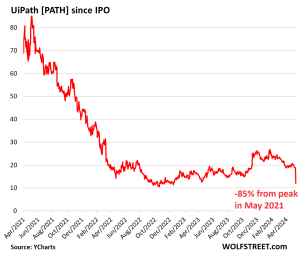In the rapidly evolving digital landscape, Forrester’s high-performance IT has emerged as a critical factor for businesses to stay competitive. This is particularly true for companies in APAC, where the software industry is experiencing significant growth at +10.3% in 2024. Achieving peak performance in executing a software strategy remains a complex challenge for many, however.
The challenges
According to Forrester’s The State Of The Software Market In Asia Pacific, 2023, APAC software decision-makers identified budget constraints as the primary obstacle to executing their firm’s software strategy and realizing the expected business benefits. Other obstacles fall into three main categories:
- Business/IT alignment. Misalignment between business and IT can lead to wasted resources, miscommunication, resistance to change, and a diversion from strategic priorities. In APAC, software decision-makers reported a lack of alignment between IT and the business as their number one challenge when executing their software strategy.
- Technology capabilities. Gaps in technology capabilities can hinder a firm’s ability to deliver business value. Security challenges, the cost of replacing legacy systems, technical debt, and the inflexibility of existing applications were among the biggest challenges reported by software decision-makers in APAC.
- Organizational culture and talent. An inflexible culture, inadequate user training, and a lack of relevant internal skills pose significant challenges for software decision-makers. These issues become even more critical in the era of artificial intelligence.
The need for high-performance IT
Forrester defines high-performance IT as the pursuit of continuously improving business results through technology. Our ongoing research shows a strong correlation between positive business results and the principles of high-performance IT: alignment, adaptivity, and trust. These principles provide a roadmap for overcoming the challenges presented above and achieving positive business outcomes:
- Alignment ensures that the tech strategy is driven by business objectives, leading to a more efficient use of resources and a clear focus on strategic priorities.
- Adaptivity allows the organization to rapidly reconfigure core business concepts to meet emerging needs, ensuring the company remains competitive in a rapidly changing market.
- Finally, trust is earned when tech leaders demonstrate alignment and adaptivity, leading to a stronger partnership between IT and the business.
Recommendations for APAC companies as they prepare their 2025 IT budget
CIOs should tailor their budget allocation based on their specific business strategy and the demand for technology. Here’s how to fine-tune your 2025 budgeting efforts to match the intensity of investment with each high-performance IT style in response to the distinctive needs of your business strategy:
- Enabling. If your primary business objectives for 2025 emphasize stability, rationalization, and resilience — such as in tough economic times or in low-margin businesses — focus your IT budget here. Prioritize investments in maintaining and improving current systems to ensure reliable operations and minimize disruptions. This could involve system upgrades, strengthening cybersecurity measures, and enhancing IT governance.
- Amplifying. When your strategy highlights operational excellence and profitability improvement, direct a significant portion of your budget toward adopting innovative technologies that optimize current business activities. Investments in automation, advanced data analytics, and AI should be prioritized, with the goal of extracting maximum value from existing assets and driving efficiency.
- Cocreating. In scenarios where market expansion, product innovation, or achieving product leadership are key business objectives, pivot your budget toward developing new products and services or evolving business models. Invest in platforms that enable agile development and rapid iteration. Encourage close collaboration between IT and business units to cocreate value.
- Transforming. If your business strategy for 2025 calls for a radical transformation — changing both business offerings and the associated technologies — allocate a substantial budget segment here. This involves investing in cutting-edge technologies and undertaking comprehensive digital transformation initiatives that could include emerging tech such as blockchain, advanced AI, and transformative digital platforms.
By dynamically allocating your budget across these styles based on strategic business demands, you will improve your alignment performance. And remember that alignment is not a one-time task but a continuous process requiring constant attention and effort. With the right approach, your IT organization can turn alignment from a challenge into a competitive advantage.
The original article is here.
The views and opinions expressed in this article are those of the author and do not necessarily reflect those of CDOTrends. Image credit: iStockphoto/sportpoint




